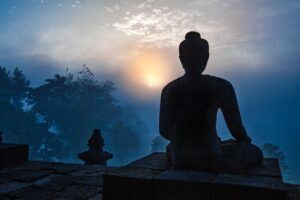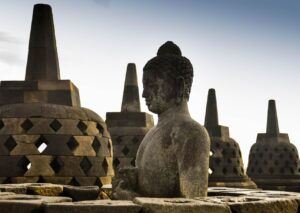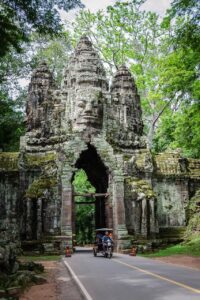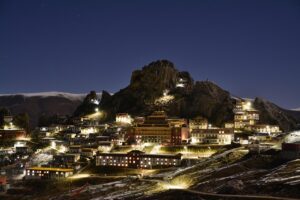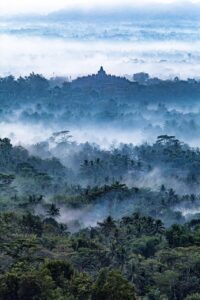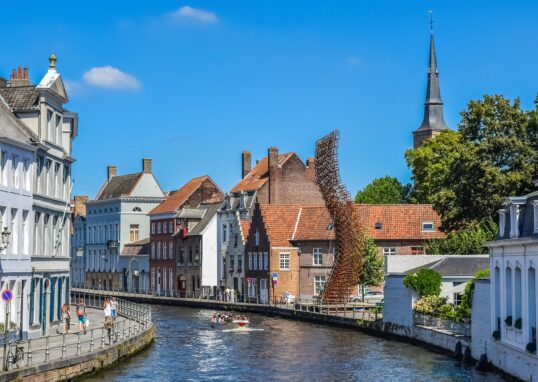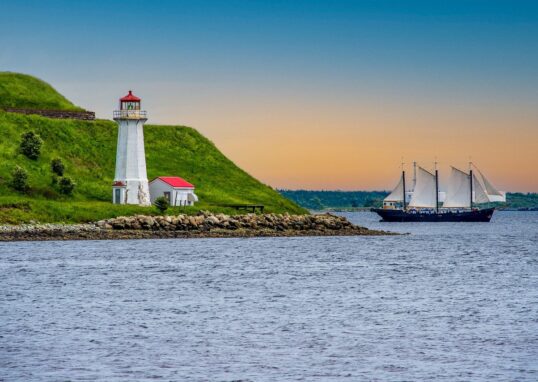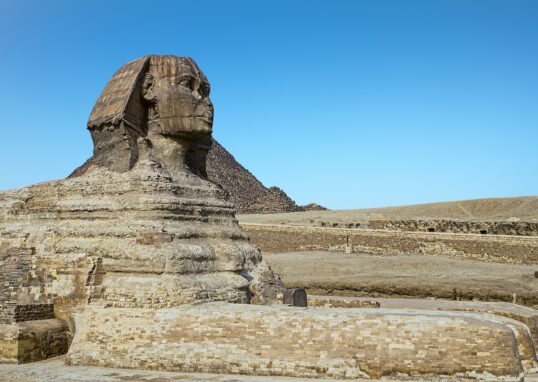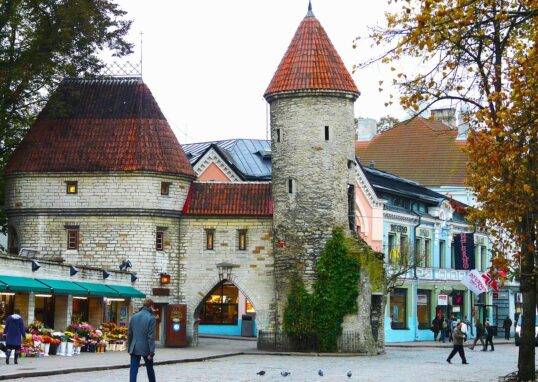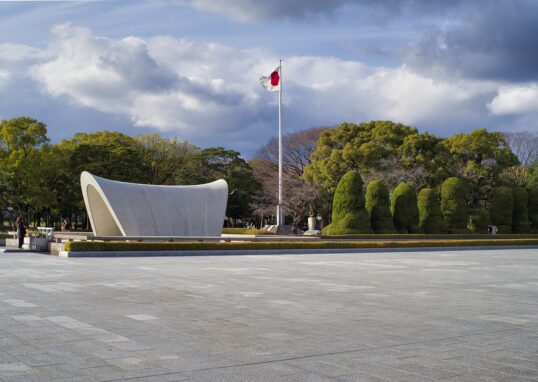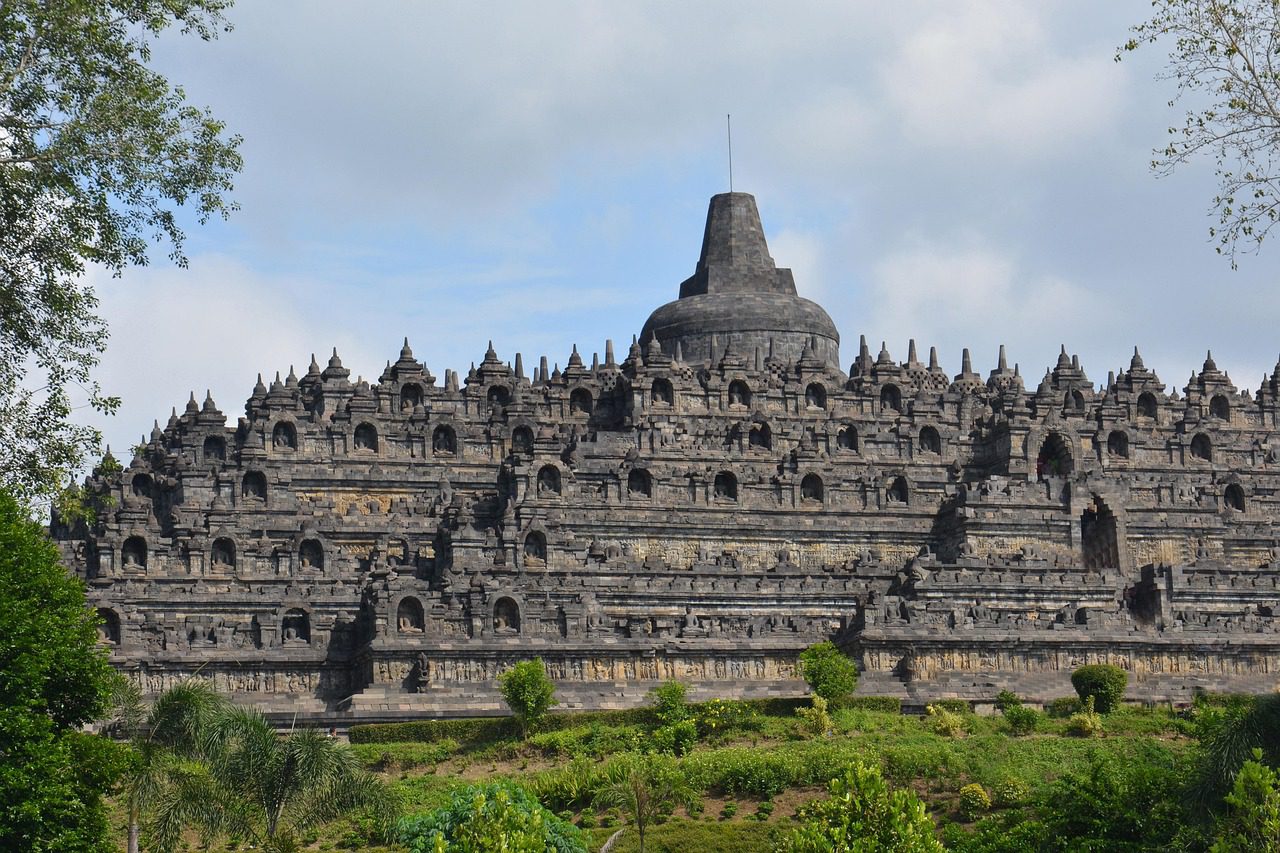
Borobudur Temple Compounds – Heart of Ancient Java
Borobudur Temple Compounds is a popular Buddhist complex located in Central Java, Indonesia. It is one of the best Buddhist monuments of architecture. It was built between the 8th–9th centuries, during the Sailendra Dynasty. It has three main temples: Borobudur, Pawon, and Mendut. The temples are aligned in a straight line. The alignment would have been ritualistic. Borobudur is the largest amongst them. It is located on a plateau of a hill between two volcanoes and rivers. The environment is green, serene, and inspiring. 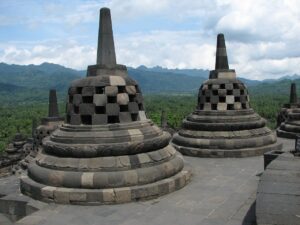
History
Borobudur was built during the Sailendra Dynasty’s reign, from 778–850 CE. The temple must have had strong Buddhist worship and study functions. It was a pilgrim site too. Then, between the 10th and 15th centuries, Borobudur fell out of use. The reason is volcanic ash, earthquakes, shift in religious emphasis, and population center relocation. Vegetation encroached on part of the temple. It was buried in part. It was in 1814 that British governor of Java, Sir Thomas Stamford Raffles, learned of Borobudur. He initiated interest in studying and conserving it. Restoration was begun under Dutch colonial administration in early 20th century. Then there was a large-scale international effort (\”Save Borobudur\”) during 1973–1983 with UNESCO support. Borobudur Temple Compounds was inscribed as a UNESCO World Heritage Site in 1991. This comprises Borobudur, Pawon, and Mendut.
Structure and Architecture
Borobudur is built on three main levels. First, a big square base with five concentric square terraces. Second, three circular platforms upon that. Third, at the top, a big central stupa. There are five square terraces which are completely covered with bas-reliefs. There are thousands of relief panels. They illustrate the life, teachings, Jataka stories, karma, and paths to enlightenment of Buddha. 72 perforated stupas encircle the circular platforms. There is a Buddha inside each of them. The decoration is symbolic. It is symbolic of increasing levels of consciousness. The temple is made of andesite stone. The stones came from local quarries or rivers. They cut them and fitted them with no mortar. They used interlocking joins. The architecture is a depiction of Buddhist cosmology: the three worlds—kamadhatu (world of desires), rupadhatu (world of forms), and arupadhatu (world of formlessness). The lower level is the base, the middle one is the square terraces, and the circular platforms and stupas are the upper level. And disguised symbolism, geometry, mandala design, and spiritual journey: humans are meant to move in a path that ascends, symbolically moving toward enlightenment.
Reliefs and Sculptures
Relief panels are very detailed. They illustrate scenes from the Buddhist scriptures. They also illustrate ancient Java everyday life: animals, markets, crafts, agriculture. This informs us on how humans lived a long time back. There are over 500 Buddha statues in the complex. Some are standing on the square terraces, others in stupas. Some of the carvings are eroded. Rain, wind, moss, volcanic ash, and human contact have battered them. Restoration has tried to keep the carvings intact. The gates and entrances have intricately carved lions, kala heads (mythic face), makaras (monster-fish). They are protective entities. They are representations of transitions between the external world and the sacred space.
Restoration, Conservation
By the 19th century, the temple was in disrepair. Earth, trees, and soil encroached on many of it. It was rediscovered and excavated. Dutch made early restorations in the early 1900s. But true danger still lingered: water seepage, weathering, lava ash, vegetation. UNESCO and Indonesian government embarked on massive restoration between 1973-1983. Stones that had been dislodged were remounted. Drainage systems were provided. Reliefs were cleaned and preserved. Today, there is conservation. Visitor numbers are regulated. Cultural sensitivity is enforced. Local community involvement is important.
Pilgrimage and Symbolism
Borobudur is not just architecture, though; it is religious. It is pilgrimage. Many Buddhists and visitors walk the temple levels along a ritual route. They begin at the base and move upwards. They go in a clockwise direction along every level. They interpret the reliefs en route. The hike represents journey from ignorance towards enlightenment. From form to shape to formlessness. Ascending to the topmost stupa represents symbolic end of spiritual journey. Dawn and sunset are sacred moments. If light is soft, distant volcanoes glow, mist prefers to lie in valley. Tourists prefer to ascend early morning to view sunrise.
Visitor Experience
Going to Borobudur is more than admiring stones. It is an experience. Most tourists reside in Yogyakarta, a city many hundreds large some 40 km distant. They travel by land to Borobudur from there. The land passes through green rice fields, volcano slopes, rural villages. At the site, tourists go through a formal entrance. They pay an entrance fee. They can rent guides or audio guides. They go through lower terraces first. The reliefs are at hand, within sight. Then higher they go to look at stupas. Climbing up, one sees more: fields, hills, silhouette of volcano. It is steep climbing. There are several steps. At the top, a large central stupa and many small stupas. Sunrise view is breathtaking. Clouds can wander, volcanoes can show summits. Many people get quiet, reflective, awestruck. Weather makes a big difference. Rain season makes trails slippery. Dry season is more open but hot. Dawn visits are refreshing. Sunscreen, hat, water are handy. Facilities: There are visitor centers, museums, souvenir shops, cafes within proximity. Also walks within the compound garden. Also a museum called Samudra Raksa Museum located to the north of Borobudur with a museum showing maritime history and a replica ship.
Surrounding Places Near Borobudur Temple Compounds
The Borobudur Temple Compounds are situated in Central Java, Indonesia — a country of green valleys, volcano mountains, and peaceful villages. Central Java is a region rich in culture, history, and nature. After walking through the magnificent temple itself, there are numerous attractions in the surrounding area that show the beauty and charm of Java. These local attractions complement the experience of visiting Borobudur.
Mendut Temple
About 3 kilometers to the east of Borobudur lies the Mendut Temple. It is one of three temples that make up the sacred line of the Borobudur Compounds: Mendut, Pawon, and Borobudur. The majority believe pilgrims previously started at Mendut, traveled through Pawon, and concluded at Borobudur. Mendut Temple is older than Borobudur. Mendut Temple was built during the early 9th century during the Sailendra dynasty. The temple is situated on a platform and has plain but strong architecture. There are three great stone images inside the temple: Buddha reclining in a Western position, Avalokitesvara, and Vajrapani. These images are colossal, serene, and beautifully portrayed.
Outside, walls with reliefs of Buddhist stories and teachings surround the temple. The temple is flanked by big trees and a tiny green park. It is peaceful, perfect for meditation or a respite. Numerous visitors say that Mendut feels peaceful, less crowded than Borobudur but equally spiritual.
Pawon Temple
Along the way from Mendut to Borobudur stands the Pawon Temple, a humble but elegant Buddhist temple. It is hardly 1.5 kilometers from Borobudur. Pawon has possibly served as a cleansing ground before proceeding into the large temple to make offerings. Pawon is simply designed but includes fine carvings of stones. Celestial beings, flowers, and mythical beings are found in the reliefs. Even if the temple is not big, it demonstrates the refined art in ancient Java. Tropical residences and gardens also encompass Pawon Temple. Tourists like walking or biking between Pawon, Mendut, and Borobudur — a brief and scenic ride over coconut trees and rice fields.
Magelang City
Some 15 kilometers from Borobudur is the pleasant city of Magelang in Central Java. It is one of the main gates of tourists coming to Borobudur. Magelang sits in a valley surrounded by volcanoes like Mount Merapi and Mount Merbabu. Because of its fertile soil and green surroundings, the city has now been coined as the “garden city.” Magelang boasts both nature view and modern facilities. There are restaurants, hotels, markets, and art stores for tourists. The city’s Kyai Langgeng Park is a children’s delight, featuring an abundance of trees, flowers, and miniature thrill rides. Another sight not to be missed is the Diponegoro Museum, which tells the legend of Prince Diponegoro, a Javanese national hero who fought the Dutch during the 19th century. Magelang is also famous for its local crafts and coffee. One can visit small stores that sell batik fabric, woodwork, and silver accessories. The local cuisine, getuk (sweet cassava cake), is also tasty and readily available in markets.
Yogyakarta City
The bustling city of Yogyakarta is about 40 kilometers southeast of Borobudur. It is one of Indonesia’s most famous cultural cities. The majority of visitors stay in Yogyakarta and make a day tour to Borobudur from there. Yogyakarta is full of art, tradition, and history. The city is graced with the Kraton (Sultan’s Palace), a living heritage of the Javanese sultanate. It has beautiful pavilions, courtyards, and museums. About a few kilometers distant stands the Taman Sari Water Castle, an ancient royal garden with secret passageways and bathing pools. Yogyakarta is also well known as a center of education, having universities and art schools. Its legendary Malioboro Street is lively day and night. It’s lined with shopping centers, food stalls, and street artists. You can buy handmade souvenirs, enjoy gudeg (traditional sweet jackfruit dish), and hear local music.
Mount Merapi
To Borobudur’s east lies the imposing Mount Merapi, Indonesia’s most visible volcano. It rises over 2,900 meters above sea level and can generally be seen from Borobudur’s uppermost terraces on a clear morning. The volcano’s name means “Mountain of Fire.”. Mount Merapi is as beautiful as it is lethal. It has erupted many times, shaping the environment and the lives of the people living in the area. Despite the danger, Merapi is open for adventure lovers and photographers. There are jeep tours that are guided and pass through the black volcanic sands, old lava fields, and destroyed villages. At the base of Merapi stands the Museum Sisa Hartaku (“Remains of My Treasure Museum”). It houses remnants left following a devastating eruption in 2010 — bicycles, clocks, kitchenware, and photographs — all which depict the power of nature and the resilience of the people.
Elo and Progo Rivers
There are two rivers, Elo and Progo, which flow not too distant from Borobudur. The rivers give life to the valley and make the landscape very green. The rivers are also popular when it comes to rafting and kayaking. The Elo River, for example, has serene and picturesque courses, which are perfect for beginners. Along the riverbank, tourists can see farmers working in the fields, buffalo grazing in the meadows, and children playing on the banks. There are resorts and homestays along the river that offer peaceful stays, away from the hustle of the city.
Punthuk Setumbu Hill
For the sunrises, sunrise lovers have their perfect spot in Punthuk Setumbu Hill. It is located about 4 kilometers west of Borobudur. Early morning before sunrise is when the crowds come to visit. At the hilltop, you can look at Borobudur Temple rising from the mist, with Mount Merapi and Mount Merbabu looming in the background. The combination of fog, sun, and old temple below is one of the most magical views in Indonesia. The hill is part of the Menoreh Mountains, running along Borobudur’s west boundary. The area is serene, with small farms and coffee plantations. Hot tea or coffee is also provided by the local villagers to visitors post-sunrise.
Candirejo Village
Just within proximity of Borobudur, around 3 kilometers, stands Candirejo Village, a traditional Javanese village renowned for cultural tourism. The villagers welcome those who want to witness rural life. At Candirejo, tourists can enjoy such activities as village tours by horse carts (andong), batik-making, or gamelan music lessons. Tourists are also allowed to help with farm work, such as planting or harvesting rice. The village is surrounded by rice paddies and green fruit gardens. Overnight stays at a homestay in the local area give guests a chance to sample Javanese home food and learn about Javanese customs. Candirejo is part of a sustainable tourism project funded by UNESCO to promote conservation of Borobudur’s cultural heritage.
Magelang Highlands and Coffee Plantations
Away from the temples and villages, Magelang’s highlands offer pleasant nature. Pine forests and coffee plantations cover the hills. Scores of little cafes sit atop mountain sides and offer Borobudur panoramas and valley outlooks. Visitors have coffee-tasting tours, learn about traditional roasting, and buy fresh beans. Freshness in the atmosphere attracts birdsong, and coffee scent make it a relaxing escape.
Significance & Values
Borobudur is more than a ruin. It is cultural, spiritual, artistic importance.
- It’s a work of art and architecture in Buddhist tradition. The combination of pyramid terraces, stupas, reliefs, statues is rare.
- It shows superb craftsmanship: stone carving, engineering (drainage, stability of support), geometry.
- It’s a symbol of Indonesia’s heritage. It draws people from across the globe for pilgrimage, study, and respect.
- It synthesizes indigenous Javanese religion and Mahayana Buddhism. It is built on ideas of ancestor worship, cosmology, and light.
Challenges & Protection
Borobudur is under threat. Weathering, rain, moss, volcanic ash, earthquakes. Plants in cracks. Visitors also ruin reliefs if not careful. Pressure of tourism is heavy. National Geographic
So protection is essential. Indonesian government law protects cultural heritage. UNESCO helps. Site management plan requires finding a balance between conservation and tourism. Restoration must employ careful methods. Tourism management includes managing the number of visitors, keeping tracks free, not littering, informing visitors. People from the area are involved in protecting the site. Buffer zones surrounding the site help. UNESCO World Heritage Centre
Why Visit Borobudur
- It is stunning. The shape, the reliefs, the view, the fog, the dawn light, silhouettes of volcanoes. All together are strong visual impact.It is important. Terraced walk up to is a journey of pilgrimage. It makes one consider life, change, spirituality.
- It is steeped in history. Seeing ancient statues, reliefs, ritual connotations. Reading about Vietnam of ancient Java, Buddhist tradition. Surroundings are charming. Nearby towns, local way of life, scenery, other temples, volcano climbs. Good conditions. Museums, accommodations, guided tours, sunrise opportunities.
Tips for Visitors
- Go early, especially for sunrise. Cooler and fewer people. Wear comfortable shoes. Lots of steps, uneven rocks. Bring water, sunblock, hat.
- Hire local guide. They interpret stories in reliefs, the history, symbols. Be respectful of sacredness. Dress conservatively, move quietly especially in areas with stupas and devotion.
- Watch weather. Rain makes paths slippery. Dry season best for views. Visit Pawon and Mendut for a whole experience.
Conclusion
Borobudur Temple Compounds is a treasure. It is sturdy, old, sacred, beautiful. It is an expression of human craftsmanship, spirituality, and imagination. It inspires people to climb, to see, to reflect. Its temples, reliefs, stupas speak. Its placement between volcanoes, rivers, green fields offers peace and wonder. Its conservation proves that human beings value heritage and memory. To stroll Borobudur is to stroll into history, to observe sky meet stone, to feel beauty speak. It is one of the world’s finest monuments. Surrounding temples and areas add its story larger. Borobudur is testament that the past matters, that art matters, that spirit and nature can converge.

